With the best home studio monitors, you can take the quality of your recordings up to the highest level by getting clearer sound that allows you to fine-tune the mix of your audio.
But why would you bother with home studio monitors in the first place?
After all, headphones or your Hi-Fi setup could do the trick…Right?
Wrong.
The short answer here is: you need natural sound.
Whereas Hi-Fi, headphones, or PC speakers ‘tune’ the sound to improve your audial experience, studio monitors let you get the real, true sound of your mix so you can tweak it accordingly and get it sounding its very best across all mediums.
Of course, it has to be pointed out that not all studio monitors are the same. Home studio monitors come with all sorts of different features, sound quality levels, build quality, and price points.
In this article, I will review the best studio monitors that I worked with during my home recordings.
We’ve been testing and reviewing dozens of home studio monitors since we originally put together this guide 3 years ago, and now, we’ve fully updated it for 2023 to include a curated list of the top studio monitor speakers on the market today.
Disclosure: Some of the links in this article are affiliate links, meaning at no additional cost for you, we might get a commission if you click the link and purchase.
Studio Monitors vs. Speakers
Now, what’s the difference between speakers and studio monitors?
Speakers may have an impact on the recording (weird response curve, too much bass) whereas studio monitors produce the recorded sound with no extra overtones, providing a flat frequency response.
Studio monitors are flat and accurate, with minimal distortion – a great fit for critical listening and studio recording.
Long story short, in studios where ‘critical listening’ is a must-have, you should opt for monitors.
What are the Best Home Studio Monitors?
To come up with a well-balanced collection of studio monitor speakers, I split my choices between the best inexpensive, mid-range and high-end categories.
The starting budget is $100, and the sky is the limit.
In my list, I only the best studio monitors with a long track record and a good reputation among recording pros and home studio users. Tastes differ as regards sound quality, so my intention was to put together the top picks from several brands for a better picture.
- Yamaha HS5
- IK Multimedia iLoud Micro Monitors
- PreSonus Eris E3.5
- Mackie MR524
- Alesis Elevate 5 MK II
- Pioneer DJ DM 40
- JBL 308PMKII
- M-Audio BX3
- Alesis Elevate 5
- Audioengine A2+
- Yamaha HS7
- KRK Rp7 Rokit G4
- Yamaha HS8
- Adam Audio T7V
- Avantone Audio Active MixCubes
- KRK Rokit 5 G3
- Adam Audio A7X
- Neumann KH 120 A
- KEF LS50 Meta Monitor
Now let’s get closer to it. First on my list comes the selection of the most affordable monitors.
Budget Studio Monitors
These are some of the budget-friendly studio monitors at an affordable price that garnered the most recognition from the community. Popular, highly recommended, and totally to my liking.
1. Yamaha HS5
The Yamaha HS5 design is a powered studio monitor that comes in five-, six and one-half-, and eight-inch sizes. There are tabletop and mountable versions. Unlike other monitors that sell in pairs, these sell in single units.
These are two-way, bass-reflex, bi-amplified, near-field studio monitors with a five-inch cone woofer and a one-inch dome tweeter.
They offer an excellent frequency response range of 54 Hz to 30 kHz. The bi-amplification system provides 45 watts for low-end frequencies and 25 watts for high-end frequencies for a total of 70 watts of
power amplification.
Why I Picked It:
- These studio monitors have XR and TRS phone jack inputs that accept balanced or unbalanced signals.
- There is a nice fine-tuning possible for room control and high-trim response controls.
- The design of these studio monitors gives a nice flat response rather than adding bass or treble frequencies. This precision reference helps create a more accurate mix.
Who It’s For: The Yamaha HS5 monitor is the type that is typically used in a professional recording studio for A/B checking that is why it is sold as a separate unit. For example, perhaps you want to check just the right side of a stereo mix so you would send that signal to this single monitor to hear it as a stand-alone audio output. There is a slightly different sound when you do this, compared to a panned-right version of the same output signal.
Check out the video review of the Yamaha HS5 monitor by Sonarworks that mentions its legendary white-cone look and its superb professional recording studio quality. They tested these studio monitor speakers using an anechoic chamber to determine its frequency response and distortion characteristics. Then, they compared the sound quality in five different real-life studio environments.
Buying Options
- Check price on Amazon →
- Check price on Sweetwater →
- Check price on Guitar Center →
- Check price on Musician’s Friend →
2. IK Multimedia iLoud Micro Monitors
The ultra-compact design of the three-inch IK Multimedia iLoud micro monitors makes them one of the best studio monitors for smaller studios and home studio recording spaces.
These studio monitors have a super-near-field design that creates a sweet spot for listening to the sound right at ear-level when sitting at a desk.
There is also a desktop/shelf switch to use if you place the monitors on a shelf rather than down on the desk below. No matter where you put these studio monitors in a desktop studio setting, they sound terrific.
Why I Picked It:
- I like the bi-amplified design with power amps running at 50% power to deliver the full linear range with a faster transient response and significantly lower distortion that creates a clean, crisp sound.
- The best studio monitors work with a Bluetooth signal and have one-eighth-inch stereo jacks plus direct RCA jack inputs. The Bluetooth and analog connections can be used simultaneously to compare them.
- Along with the desk/shelf adjustment switch there are a high-end filter switch and a low-end filter switch that allows a separate -3dB adjustment, which is very useful to fine-tune these studio monitors to different room conditions.
Who It’s For: If you have a limited budget and work in a small space with a desktop recording system, then the IK Multimedia iLoud micro monitors are an excellent choice. They sound good in smaller rooms, and they have adjustments for the typical problems that come from the unwanted sound reflections caused by placing monitors on a desktop or a shelf.
Check out the video review of the IK Multimedia iLoud micro monitors created by Produce Like a Pro that shows how they fit into a professional studio environment as monitors that go along well with an audio-editing workstation to be used as reference sound.
Buying Options
- Check price on Amazon →
- Check price on IK Multimedia →
- Check price on Sweetwater →
- Check price on Guitar Center →
3. Presonus Eris E3.5
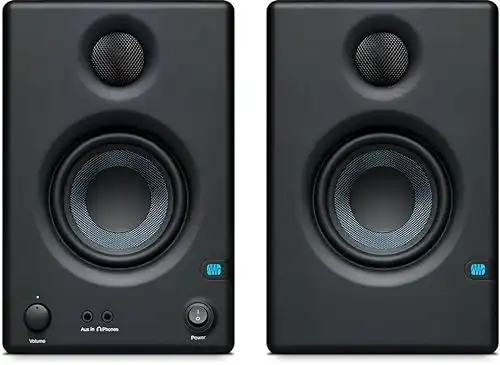 PreSonus Eris E3.5-3.5" Near Field Studio Monitor (Pair) (E3.5)
PreSonus Eris E3.5-3.5" Near Field Studio Monitor (Pair) (E3.5)
Top Features
- Accurate Sound
- Solid Bass
- Accurate frequency response
- Excellent Value for a Low Price
- Great Sound Reproduction for Music Recording, Video Production, and Gaming
The design of the Presonus Eris 3.5 inch, near-field studio monitors reproduces sound with an unenhanced frequency response to produce an accurate representation of the recorded audio without any equalizer modification. Their quality makes them some of the best studio monitors out there.
These studio monitors should be listened to while physically close to them and while set at a low to medium volume level. This helps to create a balanced sound mixture for an audio or video production.
A nice feature is that these home studio monitors have a high-end and low-end tuning knob on the back of the left-side unit. This allows the fine-tuning of the speakers to match the environment where they are used.
Why I Picked It:
- I like the connections available for different audio sources that include one-quarter inch TRS and RCA inputs on the back and one-eighth inch stereo, unbalanced line inputs on the front to use for mobile devices.
- The best part about this monitor is the accuracy of the sound reproduction created by one that is such a compact size.
- The high-end and mid-range fine-tuning controls allow -6dB to +6dB variation, which is very useful to adjust these studio monitors to different room conditions.
Who It’s For: The Presonus Eris E3.5 monitors are for the professional or semi-professional audio engineer and for use in a home recording studio where having an accurate representation of the recorded audio is critical. These studio monitors are NOT useful as home speakers that need to fill a room with sound. There is no strong bass enhancement or boosting of the mid-range frequencies, which is the typical output from a home speaker system.
Check out the unboxing video of the Presonus Eris E3.5 monitors by Open Box Tech Reviews to see how small-sized these monitors are, but don’t let the small size fool you. These are very high-quality studio monitor speakers that reproduce accurate sound in an exceptional way for a very reasonable price.
Buying Options
- Check price on Amazon →
- Check price on Sweetwater →
- Check price on Guitar Center →
- Check price on Musician’s Friend →
Need more details? Take a look at my review on the Eris E3.5 vs Mackie CR3 vs Edifier R1280T.
4. Mackie MR524 →
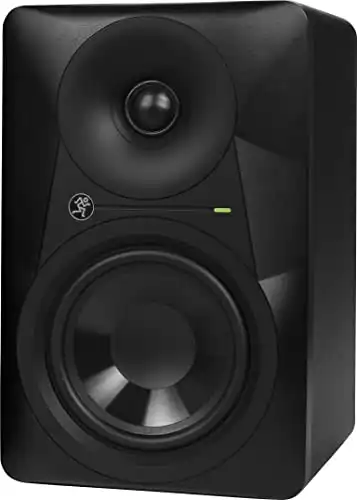 Mackie Studio Monitor, Professional Performance Superior Mix Translation with Logarithmic Waveguide design - Black 5-inch (MR524)
Mackie Studio Monitor, Professional Performance Superior Mix Translation with Logarithmic Waveguide design - Black 5-inch (MR524)
The design of the Mackie MR524 five-inch studio monitors uses Mackie’s logarithmic waveguide technology to create an ultra-wide dispersion for better stereo imaging and a larger sweet spot for listening.
The one-inch silk dome tweeter has a quick transient response time providing details and vocal precision for the high-end frequencies. The tweeter goes along nicely with the five-inch polypropylene woofers
that deliver a dynamic and
responsive low-frequency sound.
These studio monitors produce an accurate mix that easily translates to other listening environments and audio formats.
Why I Picked It:
- These are professional studio monitors designed for excellent performance. They reproduce music accurately as well as voice-over recordings. They have TRS, XLR, and RCA input jacks.
- These studio monitors come in five-, six-, and eight-inch sizes. The five-inch size provides 65 watts of dual-amplified Class A/B sound.
- There are acoustic space controls that allow fine-tuning adjustments to the frequency response of the monitors. These help adjust for the studio or room environment where the monitors are used. For example, the high-frequency filter is useful to adjust the sound if the monitors are placed against a wall or in the corners of a room.
Who It’s For: The Mackie MR524 monitors are professional-grade and can be used in a recording studio or a home recording environment to create an accurate mix. If the bass in the audio is strong, then you can use these studio monitors with the optional MRS10 subwoofer to experience enhanced low-end frequencies along with the rest of the music. The subwoofer has a built-in variable crossover so that it can be fine-tuned to match the monitors. It comes with a footswitch that allows the bypass of the subwoofer to be able to hear the music without the bass.
Check out the review video of the Mackie MR524 monitors by VitoProduction to listen to the reviewer’s positive opinion about how these monitors compare with others in the same price range. You can see the back of these studio monitors in the video to understand the acoustic space adjustments that are possible.
Buying Options
- Check price on Amazon →
- Check price on Sweetwater →
- Check price on Guitar Center →
- Check price on Musician’s Friend →
5. Alesis Elevate 5 MK II
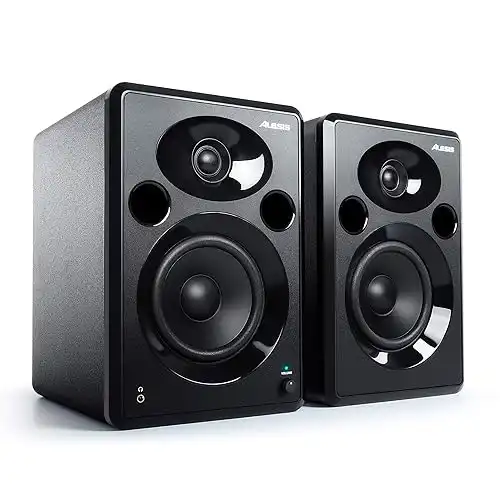 Alesis Elevate 5 MKII | Powered Desktop Studio Speakers for Home Studios/Video-Editing/Gaming and Mobile Devices
Alesis Elevate 5 MKII | Powered Desktop Studio Speakers for Home Studios/Video-Editing/Gaming and Mobile Devices
As one of the more affordable speaker sets available, the Alesis Elevate 5 MKII is a nice option for those on a budget. It adds that special touch that your studio needs and works with most of your equipment. The 1” silk tweeter produces clear sounds and works with a high frequency.
You also get a 5” dome that handles low noises just as well. Designed to work with any subwoofer, this speaker set allows you to connect a television or video game console as well as stereo and studio equipment. It has flexible inputs and outputs, too.
Why I Picked It:
- The included audio cable makes it easy to connect the speakers to other devices that use an RCA cable.
- Made from high-density wood, the cabinet reduces vibrations and interference.
- Thanks to the baffle around the speaker, it prevents diffraction.
Who It’s For: I recommend the Alesis Elevate 5 MKII for those with small studio spaces who want big sounds and results. It has 80W of power across two channels and comes with an audio cable.
Find out what the pros think about the Alesis Elevate 5 MKII in the following video from YouTube. Not only can you see it in action, but you get a look at what comes in the box.
Buying Options
- Check price on Amazon →
- Check price on Sweetwater →
- Check price on Guitar Center →
- Check price on Musician’s Friend →
6. Pioneer DJ DM 40
The design of the Pioneer DM 40 desktop monitors is suitable for a home recording studio and can be used by a DJ to produce music mixes as well.
These monitors have a front-, two-way bass reflex system and use the diffusion effectual convexity by Olson Specs (DECO) technology to create a wider reach and a larger sweet spot. This makes the sound quality easy to evaluate from many positions in front of the monitors. These are active monitors with a tweeter and a soft dome woofer.
Why I Picked It:
- There is a robust sound quality coming from these compact four-inch speakers. Unlike monitors designed for “flat” sound, these monitors have a nice bass frequencies enhancement so, they can be used as regular desktop speakers well.
- These monitors come with a two-meter long (about six feet) connection cable between them. This allows the placement of them to be at your desired separation.
- The input jacks are RCA and these monitors come with a 3.5 mm stereo mini-plug to RCA converter cable. There is a mini-jack headphone monitor output as well
Who It’s For: The Pioneer DM 40 monitors are designed for DJs and those who produce music in a home recording studio. The four-inch woofers output a vibrant, punchy bass sound that gives a tight bass kick even when they are next to a wall. These monitors produce a 3D stereo sound using the DECO diffuser technology that channels the high frequencies in every direction.
Check out the video review of the Pioneer DM 40 active monitors by Digital DJ Tips who say that for the price these monitors pack a lot of punch for the money. DJs like these monitors because they are bass-heavy, which is something that feels good when listening to them.
Buying Options
7. JBL 308PMKII
Unobtrusive and well-performing, JBL’s 308PMKII builds up an awesome soundstage. The model highlights subtle details that you could’ve missed in a different audial experience. This duo will work just fine without a subwoofer. You’ll be surprised to find impressive lows and loudness that one could hardly expect within this reasonable price range.
How does LSR308 stand out from the crowd?
- Improved high frequency detail
- Adjustable to room acoustics, neutral response and sound across large workspaces and studios
- Class D Amplifiers for abundant output power
Jargon aside, this model delivers advanced depth and ambiance in recordings, even in a dense mix. Plus, you don’t have to stand in front of the speakers to make smooth adjustments to the mix.
Killer feature: Incredible imaging
Detail is key. The expansive soundstage and wide stereo panorama offered by JBL definitely have an edge over the competition.
In this review, you can find a test and feature comparison of the LSR305 and 308. Enjoy the video and decide which one better addresses your objectives:
Buying Options
8. M-Audio BX3
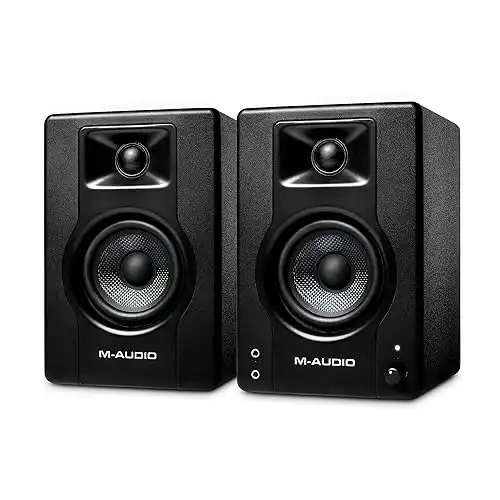 M-Audio BX3 – 120-Watt Powered Desktop Computer Speakers / Studio Monitors for Gaming, Music Production, Live Streaming and Podcasting (Pair)
M-Audio BX3 – 120-Watt Powered Desktop Computer Speakers / Studio Monitors for Gaming, Music Production, Live Streaming and Podcasting (Pair)
Need equipment for a basic home studio? This budget device is exactly what you need. M-Audio BX3 is a pair of compact desktop monitors, similar to the older AV40 model.
Facts and figures:
- 3.5 or 4.5-inch woofer models available
- 120-watt powered speakers
- Versatile monitors for everything from gaming to podcasting to home recording
- Premium components for a deep, full sound
What to make of it all? Clear sound in the near field. Decent loudness that won’t be window-shattering, yet a good fit for a small studio. Flexibility and ease of use.
Killer feature: Speaker cones.
I mean, obviously, that’s not a top-notch tech parameter, but it’s got a great look and feel. In the BX3, the cones are placed safely behind a grill, so the device doesn’t get hot to the touch like its predecessors or other models.
The quick review below touches upon volume control, master vs. slave units, multiple input/output options, and advantages over the older M-Audio speakers.
Buying Options
9. Alesis Elevate 5
This Alesis model offers some great value for the money. Cheap and cheerful, these speakers will provide great performance in a home recording studio. Alesis Elevate 5 comes in a pair so you get a complete setup at an incredible price.
What’s included in this model?
- 40-Watt power per speaker
- Frequency response rate at 55 Hz – 30 kHz
- Elliptical waveguides
- Bi-amplification (50 woofer and 25 tweeter)
- Wood cabinets (high-density)
In layman’s terms, these specs mean that you can’t get any booming sound out of this pair, but for a reasonable price, you can enjoy a pretty large woofer and overall clarity.
For greater wattage, try the newer 75-Watt (50 low and 25 high) model, Elevate 6.
Killer feature: Auto shut-off
In both versions – 5 and 6 – you can utilize a nifty power-saving tool. Although this may cause certain hiccups in specific scenarios, the power saving really takes a few bucks off your electricity bill. Worth considering if you find yourself in an intensive recording environment.
Here’s a descriptive video overview of the Elevate 5. Watch for the key features, benefits and tech characteristics. The video per se is somewhat pitchy but it really helps you get a better idea of the model.
Buying Options
10. Audioengine A2+ Wireless
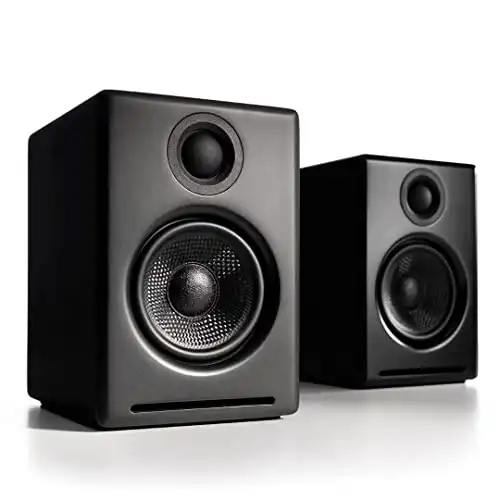 Audioengine A2+ Plus Wireless Speaker Bluetooth | Desktop Monitor Speakers | Home Music System aptX Bluetooth, 60W Powered Bookshelf Stereo Speakers | AUX Audio, USB, RCA Inputs,16-bit DAC (Black)
Audioengine A2+ Plus Wireless Speaker Bluetooth | Desktop Monitor Speakers | Home Music System aptX Bluetooth, 60W Powered Bookshelf Stereo Speakers | AUX Audio, USB, RCA Inputs,16-bit DAC (Black)
An obvious recommendation when it comes to cost-efficient studio speakers, Audioengine products have been on the radar for quite a while. The A2 towers over the previous two models on my list with its greater wattage and frequency response, yet remains in the affordable range.
The best part? They’re totally wireless and use Bluetooth connectivity.
In a nutshell:
- 60 watts of power
- Balanced sound along with elegant design
- Smart connectivity, including dual analog audio inputs for connecting multiple devices, USB audio input, and Bluetooth
- Fits any application: desktop or room-wide
- Stylish cabinets
- Cabling included
Killer feature: Small footprint – great outcome.
Audioengine offers one of the best ‘power-to-weight’ ratios on the market. Speakers this size are indeed capable of filling a whole big room with solid and refined sound.
Buying Options
That’s it in the budget department. If you’re looking for a cheaper way to check your recordings, feel free to consult my review of home studio headphones.
Mid-Range Home Studio Monitors
This is the golden middle where you can find superb studio monitors for a close-to-entry-level price. These few picks raise the bar for mid-range sound quality. Browse through the section for improved frequency response and greater wattage.
11. Yamaha HS7
Industry-standard performance for a moderate price? That’s Yamaha. HS7 delivers loud, crisp, solid sound, and throws in a few nice perks for audiophiles.
The tech parameters include:
- 1″ dome tweeter and 6.5″ cone woofer
- Frequency response at 43Hz – 30kHz
- 95W total (60W LF and 35W HF bi-amp)
- High trim response controls
- Great connectivity with XLR and TRS phone jack inputs
That’s definitely an upgrade compared to the KRK Rokit 5 – and KRK is really good. Yamaha is more punchy and offers the utmost in the mid and high range. To provide more accurate sound in the mids, HS7 kind of reduces its bass capabilities. For a boomy bass, feel free to add a standalone subwoofer.
Killer feature: The right balance
The thing with HS7 is that it sounds good. It doesn’t get pushy in the low mid, and there’s no high end shelf. A great fit for audio/video production and postproduction.
In the video piece below, the reviewer shares his thoughts of the model after owning it for a month. Watch this review for a first-hand home studio experience:
Buying Options
- Check price on Amazon →
- Check price on Sweetwater →
- Check price on Guitar Center →
- Check price on Musician’s Friend →
12. KRK Rp7 Rokit G4
The KRK RP series comes in many sizes of five-, seven-, eight-, and 10-inch monitors. The seven-inch size is a nice mid-range price, available as a single unit or in pairs. The Rokit Generation 4 uses matching drivers made with Kevlar Aramid Fiber to create the equivalent sonic integrity for all frequencies.
These monitors offer active DSP-drive room tuning. They have a nice built-in LCD graphic display on the back of the monitors to help visualize EQ settings. These monitors can also be adjusted by using a smartphone application that includes a real-time room acoustics analyzer and spectral analysis with peak hold function. This makes the fine-tuning for the room environment very easy to accomplish.
Why I Picked It:
- I like the built-in “brick-wall” limiter that automatically activates when the maximum amp-level is reached to keep a balanced sound, stop the system from harm by being overdriven, and supports a better-sounding, wider dynamic range.
- The DSP-driven system for room tuning has 25 visual settings for graphic equalization.
- There is a high-density foam pad that incorporated between the speaker and the surface of what the monitor sits on to reduce any sound transmission by vibration. This improves sound clarity.
Who It’s For: The KRK Rp7 Rokit G4 is designed for professionals and is commonly found in major recording studios. One reason why these monitors are so popular is the ability to fine-tune the monitors’ performance to match the sound recording environment. Many adjustments are possible for fine-tuning; however, it is very easy to use the smartphone application with its spectral analysis capability to discover the monitor settings that work the best for a specific room.
Check out the unboxing video of the KRK Rp7 Rokit G4 monitors by Open Box Tech Reviews to see what these monitors come with and how to set them up in your studio. You can see the back panel and the cables that come with a pair of monitors.
Buying Options
- Check price on Amazon →
- Check price on Sweetwater →
- Check price on Guitar Center →
- Check price on Musician’s Friend →
13. Yamaha HS8
The Yamaha HS series became popular after its development in the 1970s. The Yamaha HS8 is the eight-inch version in the series. Many audio engineers call the HS8 the best studio monitor. Major recording studios often choose this monitor. A new improvement to the HS series is the use of innovative transducers that support a smooth response over a wide frequency range of 38 Hz to 30 kHz.
These monitors are available as a single unit or also sold in pairs. The eight-inch size consumes 60 watts of power for operations and the bi-amplification offers 75 watts for low frequencies and 45 watts for high frequencies for a total of 120 watts output.
Why I Picked It:
- I like the level controls and the trim that can be used to fine-tune these monitors for almost any recording room environment and monitor placement. Level control is +4dB per center click. The equalization offered for high frequencies is +/- 2 dB. The room control switch reduces the low frequencies under 500Hz by 2 dB or 4dB.
- These monitors have XLR and TRS phone jack inputs. The crossover is 2 kHz. These monitors work with a wide range of inputs from balanced and unbalanced sources such as audio interfaces, keyboards, and mixers.
- There are low-cut and high-cut filters and phase control.
Who It’s For: If you can afford the investment you cannot go wrong with any of the Yamaha HS series. Over the past nearly fifty years, Yamaha continued to improve these monitors until they are as near perfect as they can be.
Don’t take my word for it though. The following video gives a detailed look and review of the Yamaha HS8. As long as you have five minutes free, you can check out the highlights of this speaker for a home studio and find out what the reviewer loved about it.
Buying Options
- Check price on Amazon →
- Check price on Sweetwater →
- Check price on Guitar Center →
- Check price on Musician’s Friend →
14. Adam Audio T7V
At only seven inches in size, the T7V from ADAM Audio is perfect for small home studios. Don’t let the small size trick you or make you think that it isn’t a good speaker though. The T7V has a large frequency range with a lower point than most in this price range have. You also get two amps that provide 70W and inputs that help you connect all of your studio equipment.
Why I Picked It:
- The monitor comes with a nice warranty and the option of extending your coverage.
- It works with a frequency range down to as low as 25kHz, which is lower than most budget monitors.
- The small size makes it perfect for a home studio.
Who It’s For: Get a better look at the ADAM Audio T7V in the video below from YouTube. In just 12 minutes, you’ll see the opinion of the reviewer and the reasons why he thinks this is one of the best budget studio monitors. I recommend giving it a watch before buying it.
Thanks to its low price, the T7V is one that I recommend for shoppers on a budget. You get a two-year warranty and the option of adding three extra years of protection when you register online.
Buying Options
- Check price on Amazon →
- Check price on Sweetwater →
- Check price on Guitar Center →
- Check price on Musician’s Friend →
15. Avantone Audio Active MixCubes
The MixCube is a mini reference monitor focusing on the mid range. It comes with a single 5.25″ woofer and produces sound with no tweeter involved.
There are no complicated controls: all you need to do is plug and play, and follow your mix. Avantone makes each model duly shielded so there will be no interfering with your computer’s sound. These speakers are shipped in a 6.5″ cube MDF cabinet, provide a relatively small footprint, and come in classic black and cream colors.
Other features include:
- Frequency response of 90Hz-17kHz
- 60W amplifier
- Inputs: 1 x XLR/TRS Combo
- Sealed enclosure: Sealed
- System Gain and Ground Lift controls
Where does this all bring us? MixCube is a dream for mono mixing in your setup. These home studio monitors enable easier mixing of vocals and instruments within the mid frequencies. Plus, it’s compact and lightweight. What else could you ask for?
Killer feature: Universal sound
MixCubes are based on the good old architecture of bass-deprived, full-range 5 1/4″ speakers that you can find installed in many car and hi-fi systems. If your mix works great on these monitors, it will sound equally awesome pretty much anywhere.
In the video below, Grammy winner Ryan Moys elaborates on why he loves the Avantone Mixcubes. Watch for practical tips and feature descriptions:
Buying Options
- Check price on Amazon →
- Check price on Sweetwater →
- Check price on Guitar Center →
- Check price on Musician’s Friend →
16. KRK Rokit 5 G3
Bordering on the budget category, the Rokit 5 really rocks! When you see those bright yellow dots, you know that’s the stuff you need. A highly recommended choice in the mid-range, these speakers beat many a competitor, and for a reason.
So what comes in the bundle?
- A pair of KRK RP5G3-NA Rokit 5 Generation 3 Powered Studio Monitors
- Bi-amped, class A/B amplifier
- Outstanding waveguide
- Extended response up to 35kHz
- 1 Soft-dome tweeter
- High-frequency tweaking controls
Translated into common language, this stands for low distortion, perfect clarity, and large headroom. This pair also provides superior imaging, and the ability to make high-frequency tweaks and tunes on the fly.
Killer feature: Waveguide
Rokit delivers detailed imaging in the listening position. The front bass port reduces boundary coupling and allows for flexible location, and the surface keeps off distortions. As bright and clear as it gets in this category.
The video review below questions whether KRK is the best you can get for this price, and, well… answers in the affirmative. This clip also includes feedback from a professional audio producer.
Buying Options
High-End Studio Monitors
The models here can be really pricey. These studio monitors are utilized by pros who require pristine sound clarity, great performance in the entire spectrum, and outstanding frequency response.
17. Adam Audio A7X
Since Adam was a boy, the A7X has delivered some great audial experiences to pros and amateurs alike. Borderline mid-range, this model sports some real high-end characteristics. With impressive frequency range and bass power, Adam is a standard for near-field monitoring. Check it out; you can’t go wrong!
What’s inside?
- Frequency response: 42Hz 50kHz
- Max peak SPL: 106 dB
- A/B Amplifier class
- Output power: 75W
- Input connectors: XLR, RCA
- Width: 8″, height: 13.5″, depth: 11″
In the Adam, there’s a bunch of other bells and whistles like chamfered upper corners around the tweeters, and smart design and nifty architecture to keep off-edge diffraction. Smooth mids. It’s a soft option and great value for the money for a legit studio setup.
Killer feature: Tweeter
Kudos to the Adam manufacturers! Their custom-built tweeter really rocks. The idea of using a folded ribbon instead of a woofer seems brilliant. Adam works magic with high-end frequencies and clarity. Go for it!
In the YouTube review below, the observer praises the Adam controls and universal applications. Check this out for a succinct, yet comprehensive assessment.
Buying Options
18. Neumann KH 120 A
The Neumann KH 120 A active studio monitor is made by Sennheiser. The monitors are very high quality and very pricey because of that fact. They are precision manufactured with + or – 0.5 dB tolerance that ensures a perfectly matched pair if you want to buy two or you can also buy just one unit if that is all you need.
These fantastic monitors can serve as a near-field reference or as a part of a large multi-channel system. The KH 120 has a mathematically modeled dispersion waveguide (MMD) that delivers a smooth, off-axis response. There are four-position acoustical controls for bass frequencies, low-mid, and treble frequencies.
Why I Picked It:
- I like the bi-amplification (2 x 50 watts) and two-way monitoring features. These monitors have a 5.25 long woofer and a one-inch, titanium-fabric dome tweeter.
- The cabinet for these studio monitors is rugged and made from non-resonant aluminum to eliminate unwanted cabinet-induced sound coloration.
- The frequency response is an excellent range of 52 Hz to 21 kHz (+ or – 3 dB).
Who It’s For: The Neumann KH 120 A is a luxury item for most people. If you can scrape together the budget to buy these studio monitors, you will impress your friends and clients, if they know anything about audio monitors. They are made in Germany and cost between three to six times more than the equivalent studio monitors made by others.
Check out Part 1 (of several parts) of the video review of the Neumann KH 120 A monitors by DV247 Music Store UK TV with an interview of the Neumann President Wolfgang Fraissinet recorded in 2011.
Buying Options
- Check price on Amazon →
- Check price on Sweetwater →
- Check price on Guitar Center →
- Check price on Musician’s Friend →
19. KEF LS50 Meta
Good things come in small packages. This adage is more than true when referring to this KEF Meta monitor. Mind-blowing quality in a bookshelf model. Great look and feel. Accolades from Stereophile, What Hi-Fi, and other reputed sources. Totally worth the money.
What is it like?
- Produces a large listening sweet spot
- Its Uni-Q driver array ensures a clean and expansive sound
- Reproduces audio flat and unaltered
- Four classy colors
- Solid build quality
Behind the tech jargon, one finds agility and dynamic and tonal accuracy. The KEF LS50 professional monitors always stay precise staging-wise: it reflects everything – which, of course, could include recording flaws, but that’s another story. The KEF also looks fantastic: it’s compact and powerful enough to cover most typical studio needs.
Killer feature: Accuracy
Hold your breath and shoo away the insects – the KEF will reveal anything that happened. Make sure you position it right for the best results, and enjoy the ample rich audio.
This video review speaks of the pros and cons of the model, and includes a few curious tweaks to unlock KEF’s full potential:
Buying Options
Need more information? Refer to my review on the KEF LS50 mini-monitor vs SVS Ultra Bookshelf vs ELAC Uni-fi UB5 vs KEF R300
Useful Resources
- Types of Studio Monitors
- Studio Monitor Placement
- Speaker and Studio Monitor Placement Secrets
- How to connect multiple mics
- The Best Acoustic Foam Panels for Sound Treating Your Studio
A Final Word on the Best Studio Monitors for Home
Now that my roundup of the best studio monitors comes to an end, it’s time to give out the awards.
The choice is really tough here since I’m sort of comparing apples to oranges, but I’d like to pick two models that will fit most common use scenarios.
My gold medal for the best studio monitors goes to the Yamaha HS8 for its smart functional compromise between low, mid and high.
The silver for the best studio monitors goes to Adam for its excellent price-to-performance ratio, superb frequency response, and bass that makes you shiver – in a good way.
Interested in related stuff that you might need along with your studio monitors?
- Here’s a list of recommended studio monitor stands →
- Looking for speaker isolation pads? Go through my top picks →
Have any questions about our guide to the best studio monitors for home setups? Leave a comment below so we can help.

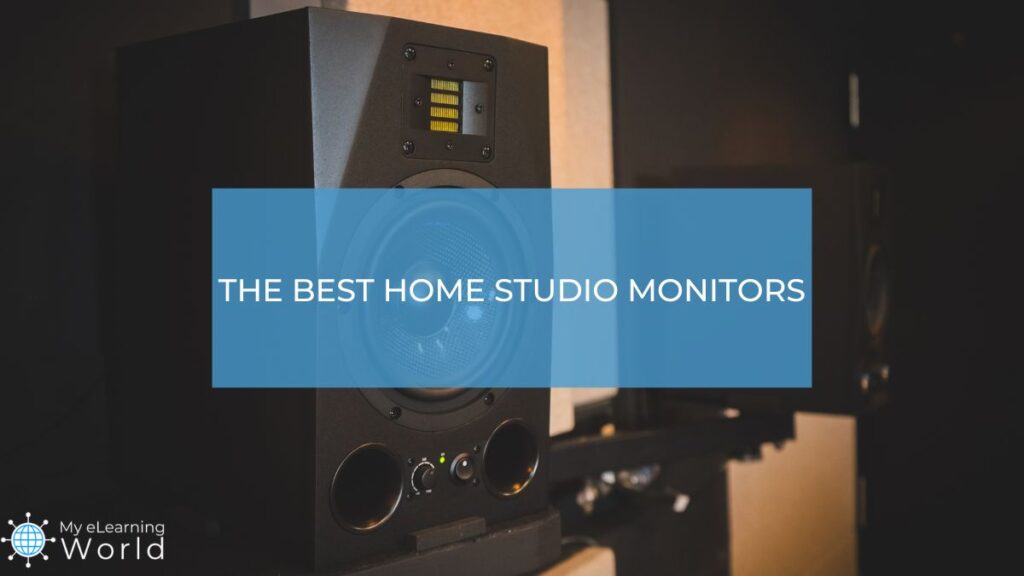
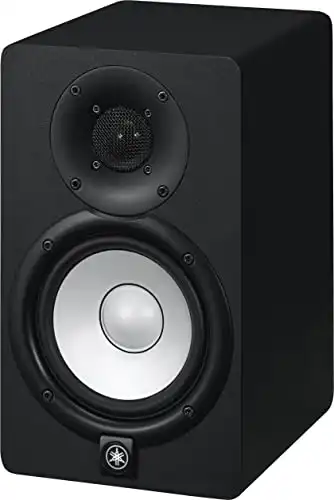
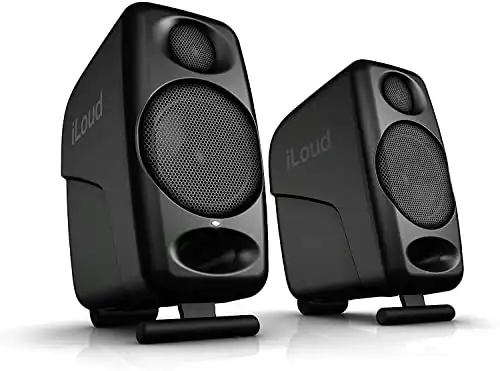
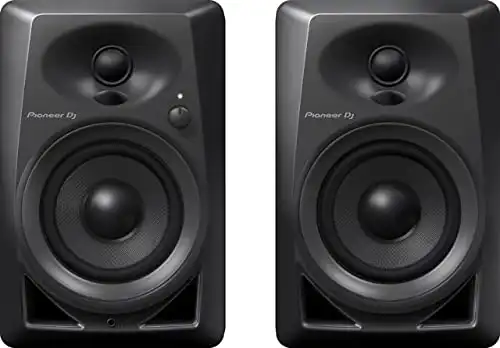
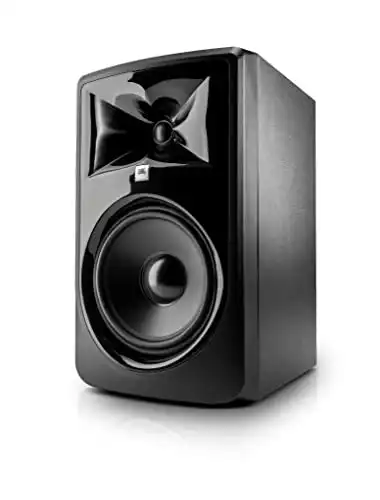
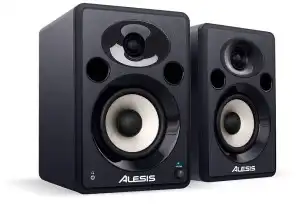
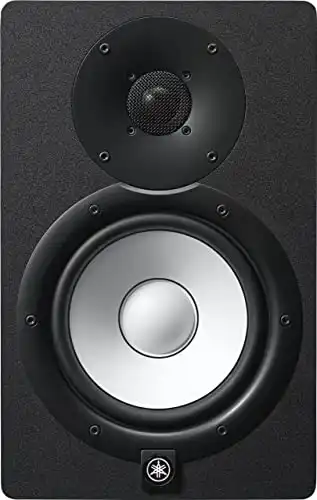
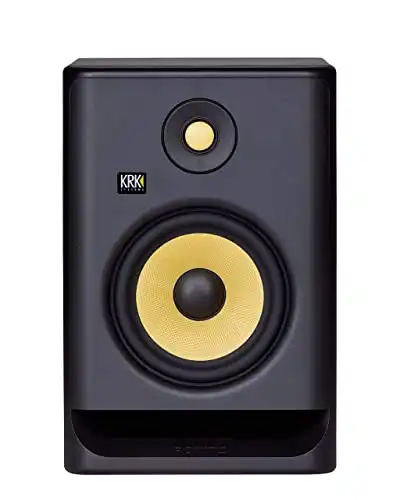
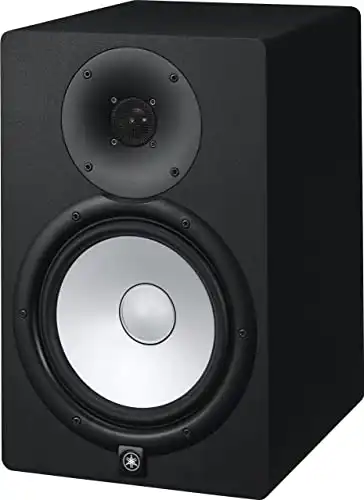
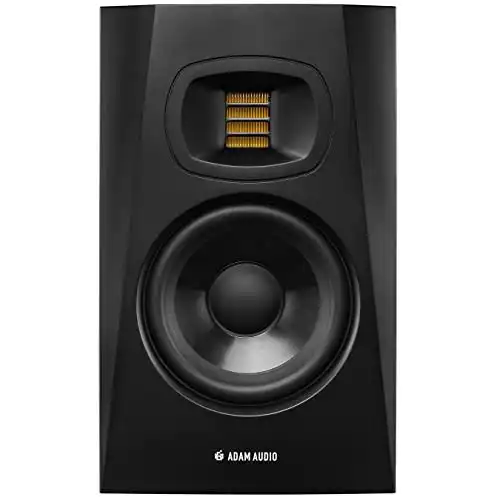
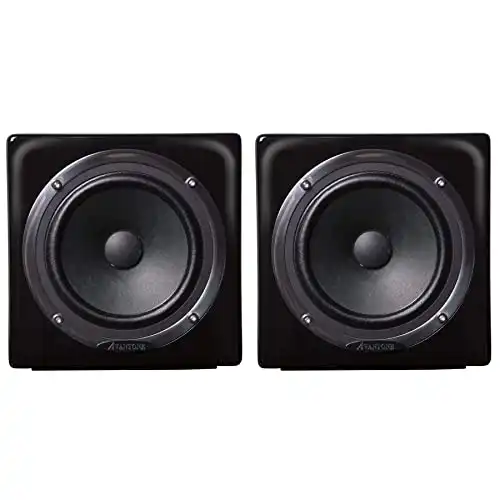
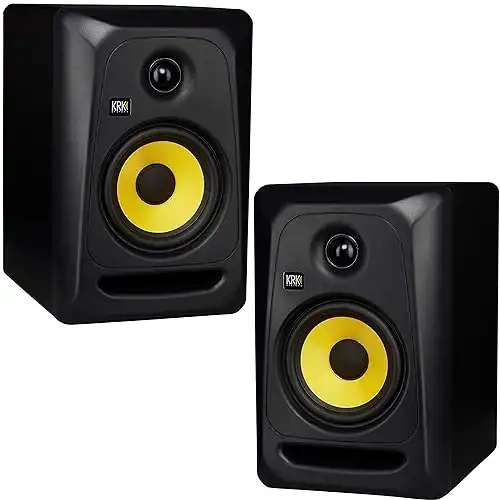
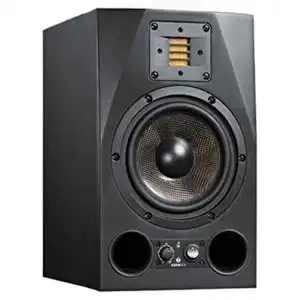
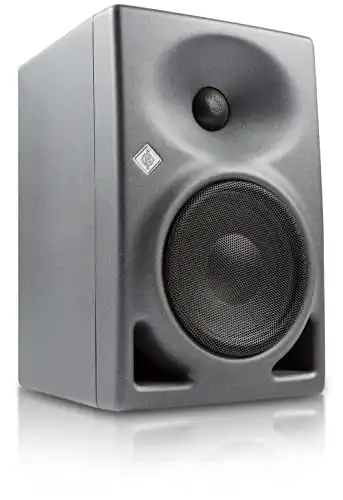
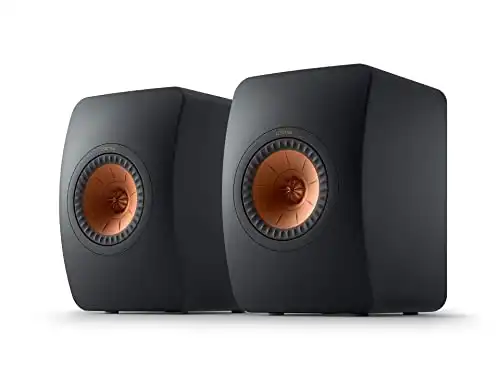
I am thinking of building a home recording studio and working on a budget for the construction and the equipment. The information I found on this website is very helpful. I am ready to invest in a pair of high-quality monitors and I am wondering if I should finish the audio recording room first, before selecting the monitors. How will I know what they sound like in my new home recording studio? Can I test the room somehow before I buy the monitors to improve my chances of getting a good pair of them?
That is an excellent question. The very best monitors can sound terrible in a room, which has not been adjusted with proper sound treatment. Monitors do not correct problems with reflections of sound in a room. They may make a bad recording in a poorly treated room sound even worse on playback. The first thing you want to do is to set up your sound recording room properly to get rid of unwanted reflected sound, echoes, and reverberations. You can find out how to do this by searching for articles about acoustic tiles and sound treatment on this website.
You can analyze the sound in your recording studio room by using room acoustics software such as REW. You do this by recording a test tone using the sound analysis software. Then, you can learn what is needed to adjust the room. After all the adjustments are made, you can then decide which monitors are best suited for the sound dynamics you find in your new home recording studio.
Hi, Scott! Thanks for guide. I have a question: how much should I budget and plan to spend to get a decent set of monitors for my home recording studio?
Hi, Ted. Thank you for your question. The desktop monitors that are good quality are about $100 for a pair of three-inch monitors. The larger, professional recording studio monitors can run as high as $700 each for an eight-inch size from a top name luxury brand and around $200 to $300 each for a strong brand that is more modestly priced. The more expensive monitors are sold individually or in pairs. Depending on the sound quality conditions that you are checking, you may only need one monitor, not two.
My friend got a new set of monitors for his home recording studio and let me listen to them playing back something that he just recorded. I was too embarrassed to tell him that I thought they sounded terrible with no bass and very tinny. Why does he think they sound good?
Thank you for your question, Jeff! One of the most common questions and complaints that I get about recording studio monitors is that they do not have any bass sound. It may surprise you to learn that is exactly what you want them to sound like. When a monitor reproduces a clean sound, it does not create the typical enhancements that are so commonly added to the sound by home stereo systems. Most home stereo systems automatically add bass and treble to audio recordings. When recording in a studio, you want to record a more “flat” sound so that later when these recordings play on a home system they will sound normal and not too bass-heavy.
A home recording studio monitor is best when it creates a reference sound that will sound good on many different systems. That is easier to accomplish if the monitor does NOT add bass and treble to the sound, which will be added later by the other systems.